This article is written by Mohammed Shazayb Tanveer S, Advocate, Madras High Court
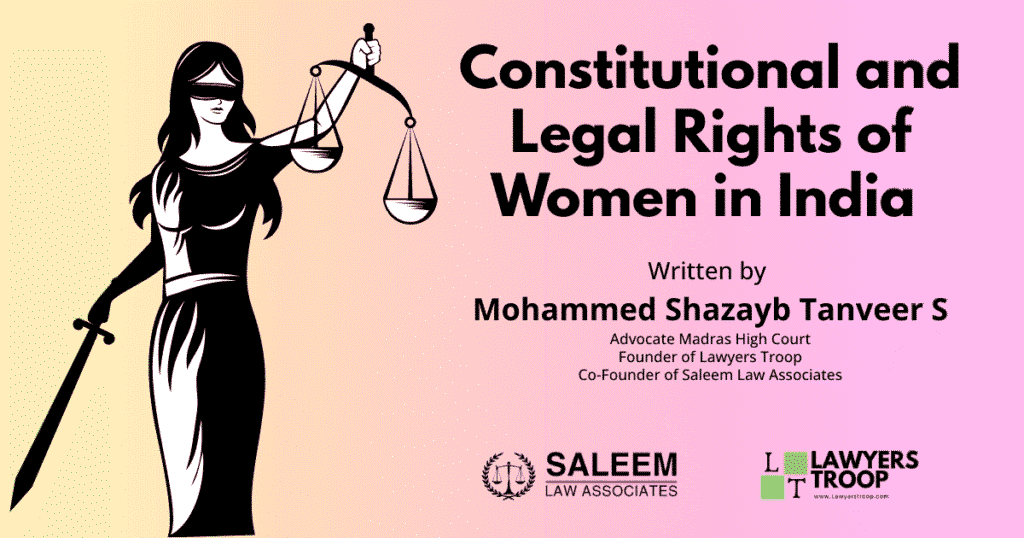
Introduction
The Constitutional and Legal Rights of Women in India form the backbone of the country’s legal and social commitment to gender equality.
For generations, Indian women have endured various forms of discrimination in education, employment, family, and public life.
But over time, the legal system has evolved into a powerful instrument for Empowering Women Through Law, providing constitutional guarantees and strengthened by a range of progressive statutes.
From the moment a girl is born, legal provisions come into play to ensure her protection, dignity, and equal opportunities.
Whether it’s the right to education, protection from domestic violence, equal pay for equal work, or freedom to make choices in marriage and property, the law supports women at every stage of life.
This blog explores in detail the constitutional and legal rights of women in India, highlighting key articles, landmark legislations, and recent reforms such as the Bharatiya Nyaya Sanhita and Bharatiya Nagarik Suraksha Sanhita.
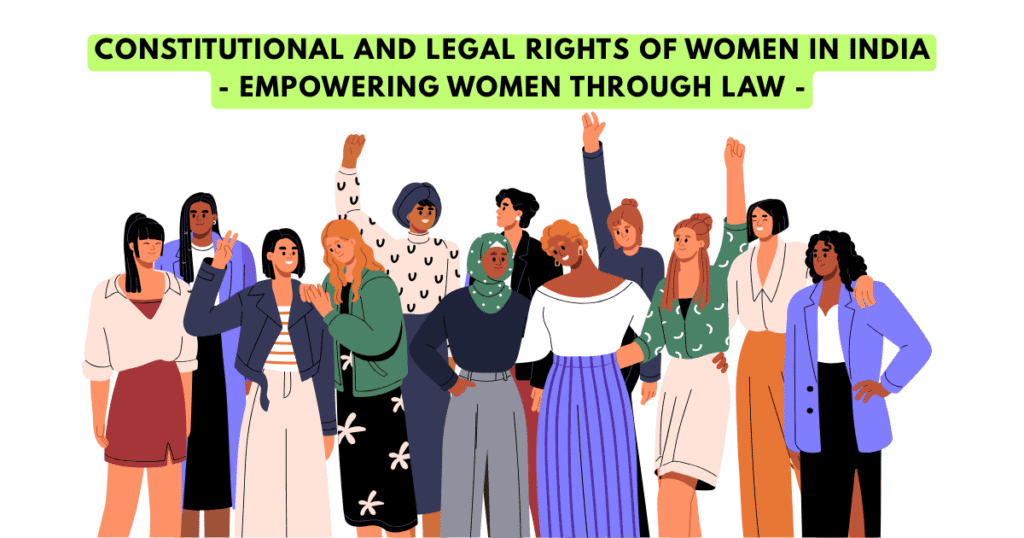
I. Constitutional Provisions for Women’s Rights
The Constitution of India lays a strong foundation for gender equality and women’s empowerment.
It not only guarantees fundamental rights to all citizens but also allows the State to enact special laws and policies to protect and uplift women.
Below are the key constitutional provisions that serve as the backbone of women’s legal rights in India.
1. Equality Before Law – Article 14
“The State shall not deny to any person equality before the law or the equal protection of the laws within the territory of India.”
Article 14 is one of the most significant and universally applicable provisions of the Constitution.
It ensures formal legal equality to every person, regardless of gender, caste, class, or religion.
What it means for women:
- Women must be treated on par with men in the eyes of the law.
- Any law or executive action that discriminates against women without a valid, reasonable classification is subject to being struck down by the courts.
- Equal protection of laws means not just identical treatment but equitable treatment — recognizing the special needs and circumstances of women.
Judicial Interpretation:
The Supreme Court has consistently upheld the idea that substantive equality is necessary to address real-life disadvantages faced by women. This means treating equals equally, and unequals equitably.
For instance, in Air India v. Nargesh Meerza (1981), service conditions that unfairly discriminated against air hostesses were held unconstitutional under Article 14.
Key Takeaways:
- Article 14 serves as the constitutional foundation for challenging discriminatory practices in education, employment, property, and more.
- It enables courts to strike down laws, rules, or practices that are inherently biased or prejudicial toward women.
This provision is the bedrock upon which many women-centric laws stand, whether it’s about equal pay, equal access to justice, or protection from violence and abuse.
By guaranteeing equality before law, Article 14 ensures that no woman is left behind in her pursuit of justice, dignity, and opportunity.
2. Prohibition of Discrimination – Article 15
“The State shall not discriminate against any citizen on grounds only of religion, race, caste, sex, place of birth or any of them.”
Article 15 of the Indian Constitution goes a step further than Article 14 by specifically prohibiting discrimination on the basis of sex, among other grounds.
It recognizes that women have historically been subjected to unequal treatment and seeks to eliminate such discrimination in both the public and social spheres.
Breakdown of Clauses Relevant to Women:
- Article 15(1):
Prohibits the State from discriminating against any citizen on grounds including sex. This means women cannot be denied access to public spaces, education, government schemes, or employment merely because of their gender. - Article 15(2):
Extends this non-discrimination to access to shops, public restaurants, hotels, and places of public entertainment, as well as wells, tanks, roads, and places of public resort. This ensures that women enjoy equal freedom of movement and access in public life. - Article 15(3):
Exception with purpose: It empowers the State to make special provisions for women and children. Unlike other fundamental rights which apply equally, this clause recognizes the historical disadvantage faced by women and allows the State to pass affirmative action laws.
Why Article 15(3) Is So Important
This clause forms the constitutional basis for numerous pro-women laws and welfare schemes, including:
- Reservation for women in Panchayats and Municipalities (under Article 243D and 243T)
- Women-exclusive hostels, colleges, and scholarships
- Laws like the Maternity Benefit Act, Domestic Violence Act, and Sexual Harassment Act
- Government schemes like Beti Bachao Beti Padhao, Ujjwala Yojana, etc.
Courts have upheld such provisions as valid positive discrimination designed to achieve real equality.
Judicial Interpretation
In Dattatraya Motiram More v. State of Bombay (1953), the Bombay High Court upheld the constitutionality of special educational provisions for women, stating that Article 15(3) allows protective discrimination to ensure substantive equality.
Key Takeaways:
- Article 15 provides a shield against gender-based discrimination by public institutions.
- It also acts as a sword empowering the State to take proactive measures for the welfare and upliftment of women.
- This dual function—protection from discrimination and permission for affirmative action—makes Article 15 a critical cornerstone in the legal architecture for women’s empowerment.
3. Freedom of Speech and Expression – Article 19(1)(a)
“All citizens shall have the right to freedom of speech and expression.”
Article 19(1)(a) grants every Indian citizen the fundamental right to freely express their thoughts, opinions, and ideas, without fear or suppression.
For women, this right is not just political or intellectual, but also deeply personal and transformative. It affirms their agency in both private and public spheres.
Why This Right Matters for Women:
- Freedom to speak, write, protest, and publish, empowering women to voice their concerns, challenge discrimination, and participate in social and political discourse.
- Safeguards a woman’s right to express identity, dissent, and autonomy, be it through speech, attire, lifestyle, social media, or artistic work.
- Enables women to share experiences of abuse or injustice, particularly in movements like #MeToo, which gained legal legitimacy by relying on this right.
Judicial Interpretation:
in Shreya Singhal v. Union of India (2015) the Supreme Court struck down Section 66A of the IT Act, which criminalized online speech that was “offensive.”
The Court held that freedom of expression cannot be curtailed simply because it is unpopular or uncomfortable, and this decision greatly empowered women activists and survivors of gender-based violence to speak out online.
Balancing With Reasonable Restrictions:
While Article 19(1)(a) is not absolute, any restriction (under Article 19(2)) must be:
- Reasonable, and
- In the interest of public order, decency, morality, or national security.
Courts have made it clear that these restrictions cannot be used as tools to silence dissent or cultural expression, especially by women.
Key Takeaways:
- Article 19(1)(a) is a cornerstone of democratic participation and personal liberty for Indian women.
- It enables women to speak for themselves and others, create change, and hold power structures accountable.
- This right strengthens the voices of women across all sectors, law, media, academia, civil society, and digital spaces.
4. Right to Life and Personal Liberty – Article 21
“No person shall be deprived of his life or personal liberty except according to procedure established by law.”
Article 21 is among the most expansive and judicially interpreted rights in the Indian Constitution.
Initially limited to protection from arbitrary arrest and detention, it has been judicially enriched over the decades to encompass a wide range of human rights and dignities, especially vital for the protection and empowerment of women.
For Indian women, Article 21 is not just about survival, it is about living with dignity, autonomy, and freedom.
What Article 21 Includes for Women:
- Right to live with dignity
- Right to bodily autonomy
- Right to privacy
- Right to health and reproductive choice
- Right to shelter and livelihood
- Right to protection against violence (domestic, sexual, custodial)
- Right to choose a partner and marry freely
Key Judicial Interpretations:
- Right to Dignity and Sexual Autonomy
In Justice K.S. Puttaswamy v. Union of India (2017), the Supreme Court ruled that privacy is a fundamental right under Article 21. This includes a woman’s right to make decisions about her body, sexuality, and reproductive health. - Right to Choose a Life Partner
In Shafin Jahan v. Asokan K.M. (2018), the Court upheld the right of an adult woman to marry the person of her choice, regardless of religion or parental opposition—reaffirming that patriarchal interference has no place in matters of personal liberty. - Protection Against Sexual Violence
Article 21 underpins laws against rape, sexual harassment, acid attacks, and honour killings, all of which are seen as gross violations of a woman’s right to live with dignity. - Right to Safe Abortion
In X v. Principal Secretary (2022), the Supreme Court ruled that unmarried women also have the right to safe and legal abortion, interpreting the Medical Termination of Pregnancy Act in light of Article 21. This marked a shift toward recognizing reproductive choice as a fundamental right. - Custodial and Domestic Violence
The right to life includes the right to safety within homes, workplaces, and state institutions. Courts have invoked Article 21 in numerous cases to protect women from torture, abuse, and humiliation.
Intersection With Other Rights:
- Article 21 is often read alongside Articles 14 and 15 to strike down gender-discriminatory laws and practices.
- It also reinforces protections granted under criminal laws and special statutes for women (e.g., Domestic Violence Act, POSH Act, etc.).
Key Takeaways:
- Article 21 guarantees not just existence, but a meaningful and dignified life, which includes autonomy, safety, and equality.
- It forms the constitutional backbone for progressive rulings on reproductive rights, marriage choice, gender identity, privacy, and freedom from violence.
- It has enabled the judiciary to step in where the legislature or executive have been slow in protecting women’s rights.
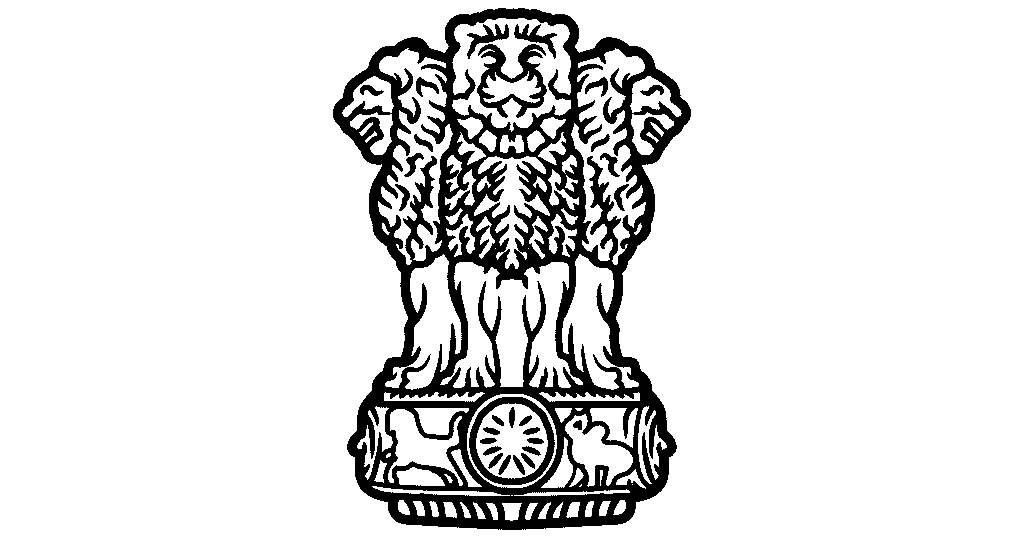
II. Directive Principles and Fundamental Duties Related to Women
While Fundamental Rights are enforceable by courts, the Directive Principles of State Policy (Part IV) and Fundamental Duties (Part IVA) of the Constitution provide moral and constitutional guidance for governance.
They reflect the aspirations of a welfare state and outline the State’s obligations toward women’s welfare, equality, and empowerment.
A. Directive Principles of State Policy (DPSPs)
The Directive Principles (Articles 36 to 51) aim to create social and economic democracy.
Several provisions directly call upon the State to promote gender justice and eliminate discrimination against women.
1. Article 39(a): Right to an Adequate Livelihood for Men and Women Equally
- The State is directed to ensure that both men and women have the right to an adequate means of livelihood.
- This provision has been the basis for employment schemes, skill development programs, and economic empowerment initiatives for women.
2. Article 39(d): Equal Pay for Equal Work
- Mandates that the State ensure equal pay for equal work for both men and women.
- It supports gender-neutral wage structures and is reflected in the Equal Remuneration Act, 1976.
3. Article 39(e): Protection of Women Against Exploitation
- The State must protect the health and strength of women and prevent their exploitation in employment or labor.
- It provides the constitutional backing for maternity benefits, workplace safety, and the Prohibition of Child Marriage and Trafficking Acts.
4. Article 42: Just and Humane Conditions of Work and Maternity Relief
- Encourages the State to make provision for:
- Fair working conditions
- Paid maternity leave
- Crèches and childcare at workplaces
- This principle finds expression in laws like:
- Maternity Benefit Act, 1961
- Factories Act, 1948
- POSH Act, 2013 for workplace harassment
5. Article 45: Early Childhood Care and Education
- Mandates the State to provide early childhood care and education for all children below the age of six.
- It indirectly supports women’s empowerment by acknowledging that early childcare responsibilities should be a State-supported function, not solely a burden on women.
6. Article 47: Duty to Improve Public Health
- This reinforces women’s right to accessible health care, including:
- Maternal and reproductive health
- Menstrual hygiene
- Nutrition and disease prevention
B. Fundamental Duties Related to Women (Article 51A)
Fundamental Duties, though not enforceable by law, are moral obligations of citizens that support the values of equality and social justice.
Article 51A(e): Renounce Practices Derogatory to the Dignity of Women
- Every Indian citizen has a duty to renounce practices that demean or oppress women.
- This includes:
- Dowry
- Female foeticide
- Domestic violence
- Eve teasing
- Gender stereotyping
- It reinforces the idea that women’s dignity is not just the State’s responsibility but also society’s collective duty.
Key Takeaways:
- DPSPs provide the ideological framework for legislations and government schemes focused on women’s socio-economic upliftment.
- Fundamental Duties remind every citizen that equality begins at home and in public behavior.
- Together, these provisions help build a value system that promotes respect, opportunity, and safety for women.
III. Key Statutory Protections for Women under Indian Law
While constitutional rights lay the foundation for equality, statutory laws in India provide concrete legal protections for women in various spheres of life, home, workplace, public space, marriage, and beyond.
These laws are designed to deter violence, ensure dignity, and offer avenues for justice when women face discrimination or abuse.
Below is a detailed overview of the major statutes enacted specifically for the protection, safety, and empowerment of women in India.
A. Provisions Related to Women under the Bharatiya Nyaya Sanhita, 2023 (BNS)
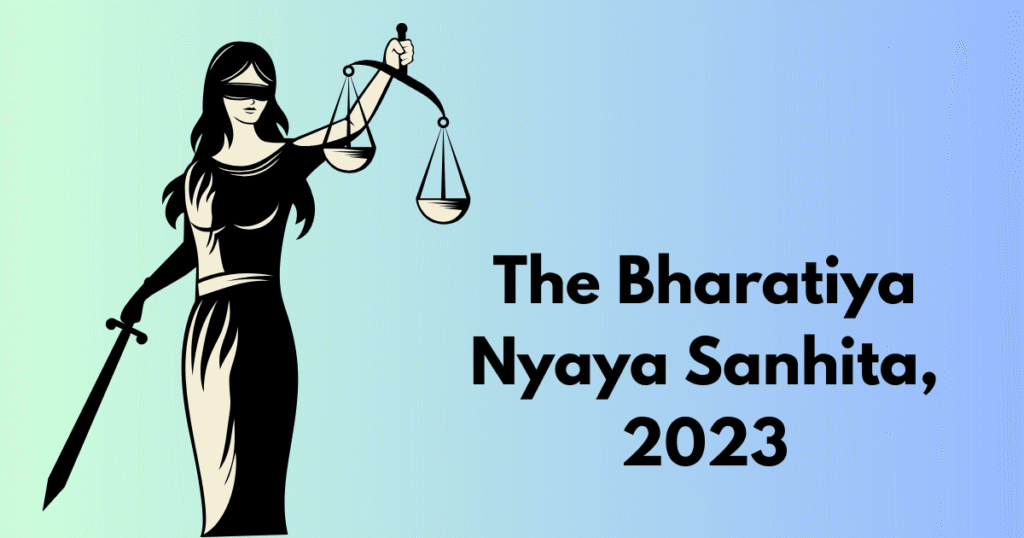
The BNS 2023, BNS stands for Bharatiya Nyaya Sanhita, which translates to “Indian Justice Code”.
It’s the new criminal code of India, replacing the older Indian Penal Code (IPC). BNS was enacted in 2023 and came into effect on July 1, 2024.
Though originally a general criminal law code, several sections of the BNS specifically address crimes against women. Here are some important sections relevant to women:
I. Offences Related to Rape and Sexual Assault
1. Section 63 – Rape (Definition)
- Defines rape comprehensively, including:
- Penetration without consent,
- Acts done by coercion, deception, or under influence of authority,
- Includes digital or object penetration.
- Consent must be unequivocal and voluntary.
2. Section 64 – Punishment for Rape
- Minimum 10 years to life imprisonment.
- Fine may also be imposed.
3. Section 65 – Aggravated Forms of Rape
- Rape of:
- Girl below 16 years,
- Pregnant woman,
- Mentally or physically disabled woman,
- By police, public servant, or relative.
- Punishment: 20 years to life, or even death in extreme cases.
4. Section 66 – Rape Leading to Death or Vegetative State
- When rape causes:
- Death, or
- Irreversible coma/vegetative state.
- Punishment: Life imprisonment or death.
5. Section 67 – Marital Rape During Separation
- If a husband rapes his wife while they are legally separated.
- Punishment: 2 to 7 years imprisonment and fine.
6. Section 68 – Sexual Intercourse by Person in Authority
- Sexual exploitation by:
- Police, teachers, jail/prison staff, or others in power.
- Punishment: 5 to 10 years and fine.
7. Section 69 – Intercourse by Deceitful Means
- Sex obtained by:
- False promises of marriage,
- Identity fraud, or
- False employment or promotion promises.
- Punishment: 10 years to life and fine.
8. Section 70 – Gang Rape
- Rape committed by a group of individuals.
- If victim is:
- Woman: 20 years to life.
- Girl below 18: Life or death penalty.
9. Section 71 – Repeat Offenders
- For convicts repeating sexual offences under Sections 63–70.
- Punishment: Life imprisonment or death.
II. Other Offences Against Women
10. Section 74 – Outraging Modesty
- Covers assault or use of criminal force intending to outrage a woman’s modesty.
- Punishment: 1 to 5 years and fine.
11. Section 75 – Sexual Harassment
- Includes:
- Unwanted touch,
- Sexually colored remarks,
- Showing pornography,
- Sexual advances
- Demands for sexual favors.
- For most acts: Rigorous imprisonment up to 3 years, or fine, or both; for sexually colored remarks: Imprisonment up to 1 year, or fine, or both.
12. Section 76 – Disrobing a Woman
- Attempting or using force to disrobe.
- Punishment: 3 to 7 years and fine.
13. Section 77 – Voyeurism
- Watching/recording a woman in private acts without consent.
- Punishment:
- First offence: 1 to 3 years.
- Repeat offence: 3 to 7 years.
14. Section 78 – Stalking
- Repeatedly following or contacting a woman despite disinterest.
- Punishment:
- First offence: Up to 3 years.
- Repeat: Up to 5 years.
15. Section 79 – Insulting Modesty
- Words, gestures, or acts intended to insult a woman’s modesty.
- Punishment: Up to 3 years and fine.
16. Section 80 – Dowry Death
- If a woman dies within 7 years of marriage due to dowry harassment.
- Punishment: 7 years to life imprisonment.
17. Section 85 – Cruelty by Husband or Relatives
- Physical or mental cruelty, including dowry harassment.
- Punishment: Up to 3 years and fine.
B. Provisions under the Bharatiya Nagarik Suraksha Sanhita, 2023 (BNSS)
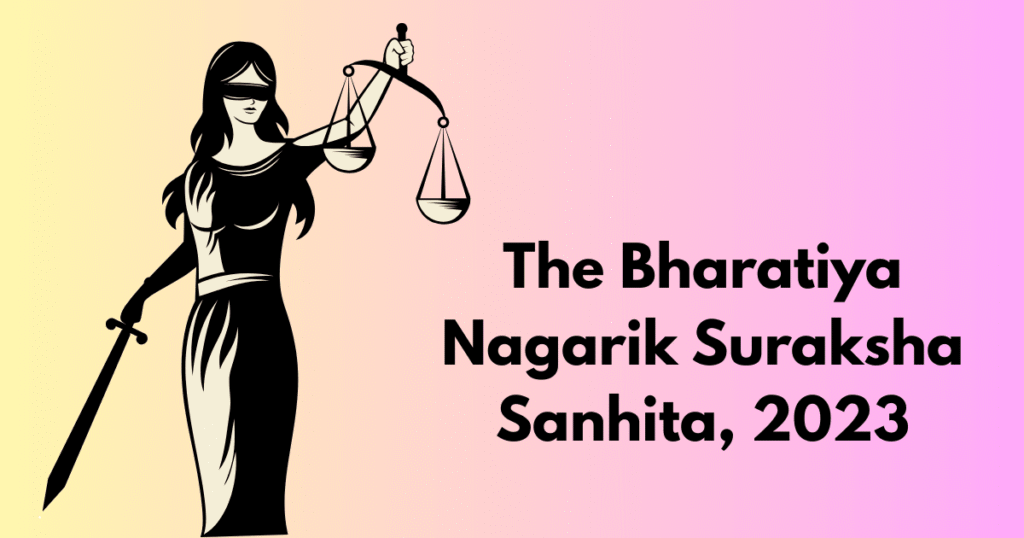
BNSS, 2023, BNSS stands for Bharatiya Nagarik Suraksha Sanhita, which translates to the Indian Citizen Protection Code.
It is a new law enacted in 2023 that aims to replace the existing Criminal Procedure Code (CrPC) of 1973 in India.
1. Section 46(5) – Arrest of Women
- No woman shall be arrested after sunset and before sunrise, except in exceptional circumstances with prior permission of a Judicial Magistrate and presence of a woman police officer.
2. Section 49(2) – Search of Woman
- Any search of a woman must be conducted by another woman, observing decency.
3. Section 184 – Medical Examination of Rape Victim
- Mandates that a registered medical practitioner conduct the examination of a rape victim with her consent.
- The medical report must be forwarded to the investigating officer within seven days.
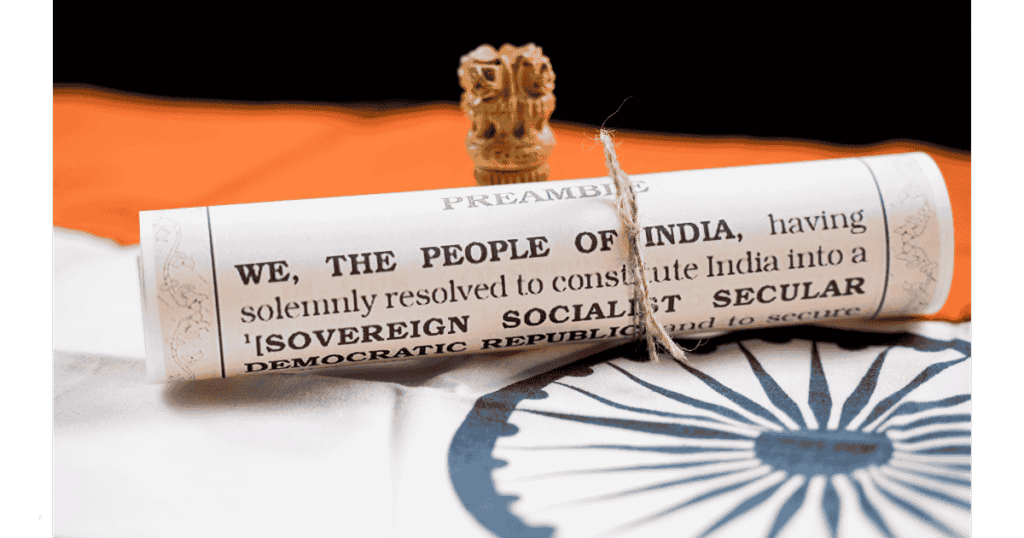
C. The Protection of Women from Domestic Violence Act, 2005 (PWDVA)
Objective: A comprehensive civil law providing immediate, accessible, and non-criminal remedies to women facing abuse in domestic relationships.
Why It Matters: It is a civil law, designed to offer immediate protection without requiring a criminal complaint, especially vital for survivors of intimate partner abuse.
Key Features:
- Recognizes physical, emotional, sexual, verbal, and economic abuse.
- Provides for:
- Protection orders
- Residence rights
- Monetary relief
- Custody of children
- Counseling and shelter homes
- Applicable to married women, as well as those in live-in relationships or other domestic arrangements.
Important Sections:
- Section 3: Defines domestic violence to include physical, emotional, sexual, verbal, and economic abuse.
- Section 12: Procedure for filing a Domestic Incident Report (DIR) and application before a Magistrate.
- Section 17: Grants right to residence in a shared household, regardless of ownership.
- Section 18–23: Provide for Protection Orders, Residence Orders, Monetary Relief, Custody Orders, and Compensation.
- Section 14: Courts can mandate counseling or mediation as part of resolution.
D. The Dowry Prohibition Act, 1961
Objective: To prohibit the giving, taking, and demanding of dowry and penalize offenders.
Why It Matters: This Act aims to eliminate the social evil of dowry, which is often the cause of domestic violence, cruelty, and bride-burning.
Key Features:
- Dowry is not just cash or gifts, but any valuable security demanded or given as a condition of marriage.
- Punishment includes imprisonment up to 5 years and fine of ₹15,000 or value of the dowry.
Important Sections:
- Section 2: Defines dowry as any property or valuable security given or agreed to be given directly or indirectly in connection with a marriage.
- Section 3: Punishment for giving or taking dowry – imprisonment up to 5 years and fine not less than ₹15,000 or the value of dowry.
- Section 4: Punishment for demanding dowry – imprisonment up to 6 months to 2 years and fine up to ₹10,000.
- Section 6: Dowry given to the bride must be transferred to her within three months of the wedding; failure can lead to imprisonment up to 2 years.
E. The Sexual Harassment of Women at Workplace (Prevention, Prohibition and Redressal) Act, 2013 – POSH Act
Objective: Enacted after the landmark Vishaka v. State of Rajasthan (1997) case, this Act institutionalizes the right of working women to a safe workplace.
Why It Matters: It enforces the principle of “right to work with dignity” as part of Article 21 of the Constitution.
Key Features:
- Mandates every employer (public or private) to:
- Form an Internal Complaints Committee (ICC)
- Establish grievance redressal mechanisms
- Sensitize staff through gender training
- Defines sexual harassment broadly to include:
- Unwelcome advances
- Sexual comments
- Stalking
- Inappropriate touching
- Applicable to organized and unorganized sectors, including domestic workers.
Important Sections:
- Section 2(n): Defines sexual harassment, including unwelcome acts like physical contact, demand for sexual favors, showing pornography, or making sexually colored remarks.
- Section 4: Mandates the constitution of an Internal Complaints Committee (ICC) in every workplace with more than 10 employees.
- Section 9: Complaint to be made within 3 months of the incident (extendable to 6 months).
- Section 13: If allegations are proven, employer must take action in accordance with service rules, or in absence of such rules, disciplinary action including termination or deduction of salary.
- Section 19: Employers must sensitize employees, provide a safe environment, and assist in filing criminal complaints if needed.
F. The Maternity Benefit Act, 1961 (Amended 2017)
Objective: To safeguard the employment of women during maternity and entitle them to maternity and related benefits.
Why It Matters: Encourages work-life balance and protects women’s right to employment during and after pregnancy.
Key Features:
- Entitlement to medical bonus and nursing breaks.
- 26 weeks of paid maternity leave for the first two children.
- Crèche facility in establishments with 50+ employees.
- Protection against dismissal during maternity leave.
Important Sections:
- Section 5(3): Increased maternity leave from 12 weeks to 26 weeks for the first two children.
- Section 11A: Mandates that establishments with 50 or more employees must provide a crèche facility.
- Section 5(4): Allows 12 weeks of leave for women adopting a child below 3 months of age or commissioning mothers.
- Section 12: Prohibits dismissal or discharge of a woman during maternity leave.
- Section 8: Entitles women to a medical bonus of ₹3,500 if no pre-natal care is provided by the employer.
G. The Prohibition of Child Marriage Act, 2006
Objective: To prevent child marriages and protect rights of children, especially girls.
Why It Matters: Aims to protect girls’ education, health, and choice by delaying early marriages.
Key Features:
- Marriage of girls below 18 (and boys below 21) as voidable at the option of the child.
- Provides for punishment of:
- Those who perform, promote, or attend child marriages.
- Empowers Child Marriage Prohibition Officers (CMPOs) to intervene.
This law addresses the deep-rooted practice of early marriage that often deprives girls of education, health, and consent.
Important Sections:
- Section 2(a): Defines child as a girl below 18 years or a boy below 21 years.
- Section 3: Child marriages are voidable at the option of the contracting party who was a child at the time.
- Section 9: Punishes a male adult (18+) marrying a child with imprisonment up to 2 years and/or fine up to ₹1 lakh.
- Section 10 & 11: Punishment for persons performing, promoting, or permitting child marriages.
- Section 16: Provides for the appointment of Child Marriage Prohibition Officers (CMPOs) with power to prevent, stop, and report child marriages.
H. The Pre-Conception and Pre-Natal Diagnostic Techniques (PCPNDT) Act, 1994
Objective: To prohibit sex selection and regulate pre-natal diagnostic techniques to prevent female foeticide.
Why It Matters: Seeks to address gender imbalance and affirms the right to life and dignity of the girl child.
Key Features:
- Prohibits misuse of medical technology (like ultrasound) to determine sex of the fetus.
- Penalizes doctors and clinics violating the rules.
- Aims to curb declining sex ratios and discrimination against girl children at birth.
Important Sections:
- Section 3A: Prohibits any person from conducting sex selection before or after conception.
- Section 5: Requires written consent of the pregnant woman before performing any diagnostic test and prohibits disclosure of the fetus’s sex.
- Section 6: Ban on sex determination – use of ultrasound or other techniques solely to determine the sex of the fetus is prohibited.
- Section 23: Punishment includes imprisonment up to 3 years and fine up to ₹10,000 for first offence, more for repeat offences.
- Section 4(3): Clinics must maintain complete records, and failure to do so is treated as a punishable offense.
I. The Equal Remuneration Act, 1976
Objective: To ensure equal pay for equal work and prevent discrimination in employment.
Why It Matters: Despite equal qualifications, women often face wage discrimination. This law provides a legal mechanism to challenge unfair pay practices.
Important Sections:
- Section 4: Mandates that employers pay equal remuneration to men and women workers for the same or similar work.
- Section 5: Prohibits employers from discriminating during recruitment, promotion, or training unless specifically allowed under law (e.g., for maternity benefits).
- Section 7: Appointment of Authority Officers to hear complaints and enforce compliance.
J. The Muslim Women (Protection of Rights on Divorce) Act, 1986
Objective: Enacted in response to the Shah Bano case, this law governs the rights of divorced Muslim women.
Why It Matters: Provides a statutory right to post-divorce maintenance, and ensures that Muslim women are not left destitute after divorce.
Important Sections:
- Section 3(1)(a): Divorced Muslim women are entitled to a reasonable and fair provision and maintenance to be made within the iddat period by the husband.
- Section 4: If the woman is unable to maintain herself after iddat, she can seek support from relatives or the Waqf Board.
K. The Muslim Women (Protection of Rights on Marriage) Act, 2019
Objective: Enacted to criminalize the practice of instant triple talaq (talaq-e-biddat).
Why It Matters: Empowers Muslim women with legal security against unilateral, arbitrary divorce, and strengthens the right to marital dignity.
Important Sections:
- Section 3: Declares the practice of instant triple talaq void and illegal.
- Section 4: Prescribes up to 3 years of imprisonment and fine for the husband who pronounces triple talaq.
- Section 5: Entitles the woman to maintenance determined by a Magistrate.
- Section 6: Woman is entitled to custody of minor children.
- Section 7: Offence is cognizable and non-bailable only on complaint by the woman or her relatives.
L. The Legal Services Authorities Act, 1987
Objective: To provide free legal aid to the underprivileged, including women, and ensure access to justice for all.
Why It Matters: Legal awareness is low among women, especially in rural areas. This Act guarantees free lawyers, legal representation, and awareness programs, making justice accessible and affordable.
Important Sections:
- Section 12(c): Women are specifically recognised as entitled to free legal aid, regardless of income.
- Section 13: Legal aid is provided in cases involving substantial justice—includes domestic violence, dowry, rape, and custody battles.
- Section 19–22B: Provides for Lok Adalats, Permanent Lok Adalats, and Legal Aid Clinics to settle disputes amicably and swiftly.
- NALSA and State Legal Services Authorities (SLSAs): Appointed under the Act to implement these services nationwide.
Conclusion
India’s legal framework stands as a strong pillar in the fight for women’s rights, combining constitutional guarantees with dedicated laws that address violence, inequality, and injustice.
From the right to equality and dignity to protection under specialized statutes, women in India are legally empowered at every stage.
But real empowerment lies in awareness, access, and enforcement. As laws evolve and society progresses, it is crucial that these rights are not just written in books but realised in every woman’s life, ensuring justice, safety, and equality for all.


0 Comments